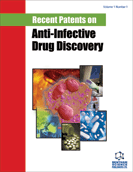Abstract
Objective: To explore a scientific idea, this study was examined for evaluation of antimicrobial potency using root, leaf and stem of ethyl acetate and chloroform extracts of C. infortunatum (Verbenaceae) due to randomly use in traditional medicine to cure common ailments such as intestinal disorder, diarrhea, tuberculosis and respiratory problems etc. Methods: The in vitro application was carried out by using disc diffusion, micro broth dilution and serial dilution techniques against clinically important life threatening organisms. Results: All the extracts showed significant inhibitory activity over the bacteria and fungus comparable to the standard drug tetracycline and fluconazole. The maximum average diameter zone of inhibition was recorded to bacterial strains against B. megaterium, S. typhi, K. pneumoniae and to fungi against A. niger and C. albicans. The MIC values of ethyl acetate and chloroform root extract were determined 64µg/ml to B. subtilis, and K. pneumoniae; to S.-β–haemolyticus and S. typhi for ethyl acetate extracts, 128µg/ml to S. aureus, and E. coli for both ethyl acetate and chloroform root extracts but only S. typhi and S.-β–haemolyticus for chloroform extrtact. Conclusion: The findings evidently appear promising antibacterial and antifungal properties of C. infortunatum against antagonistic pathogens. Leaf possess quite potent activity than root and stem specially root extract > leaf extract > stem extract. One of the more significant achievements of this study to follows and covers the most recent and important patents WO2009075290 (2009) which deals on yeast having immunopotentiating effect and food or feed. This study serves as basis for further research to lead compounds to be isolated so that may be as a template for the implications of these results for bioactivity and drug discovery potential of herbal products are discussed.
Keywords: Bacterial strains, disc diffusion assay, ethnobotanical information, fungal strains, MIC, plant, zone of inhibition.
Graphical Abstract
 26
26 2
2





















